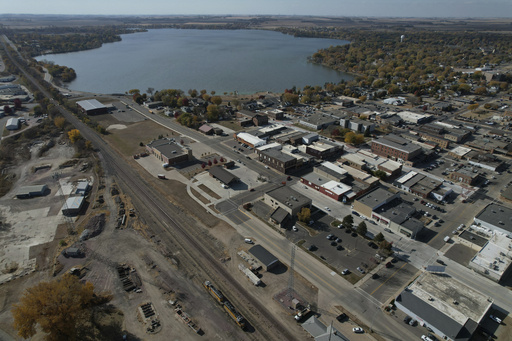WORTHINGTON, Minn. — In recent decades, Worthington has experienced a remarkable transformation, shaped primarily by an influx of immigrants from Southeast Asia, East Africa, and most recently, Central America. Once a predominantly white farming town, over 80% of students in the K-12 system now identify as students of color, and for many children, Spanish is the first language spoken at home. Soccer has taken precedence over football, signaling cultural shifts within the community.
“Everything has fundamentally changed,” noted City Councilor Chad Cummings. With immigration being a pivotal topic for voters in the upcoming elections, increasingly charged rhetoric surrounds its implications for towns nationwide.
Many longtime residents of this politically conservative area take pride in Worthington’s vibrant diversity, robust economy, and growing population. Immigrants, particularly those employed at the local pork processing plant, have helped the town defy the trends affecting rural areas that have yet to recover from the farm crisis of the 1980s. Nevertheless, the quick pace of change has led to considerable challenges, particularly concerning integration and cultural differences. The question of how to unite these diverse groups remains pressing.
“There are many ‘us’ in Worthington,” Cummings said. “How do we create a genuinely blended community? Is progress being made? In some ways, yes. Is it complete? Not yet. Will it ever be? That remains uncertain.”
At her family farm, Julie Robinson attends the same Baptist congregation her grandmother once did, where services were conducted in Swedish. As the congregation dwindled, they prayed for five new families and were surprised by the arrival of around 60 refugee families from Myanmar and Thailand, who now fill Sunday services with their Karen language.
Southeast Asian immigrants were the first to diversify Worthington, contributing to a population growth of roughly 10% in each of the past three censuses, bringing the total to about 14,000 residents, as reported by City Administrator Steve Robinson. With this growth, the city is grappling with a significant housing shortage.
The economic and cultural evolution can be seen throughout the community, influencing everything from shops and churches to the shift from baseball fields to soccer pitches. On a recent Sunday, Ethiopian Orthodox Church chairman Abebe Abetew expressed his community’s gratitude for their own sanctuary after being hosted at First Lutheran Church for several years. “Everything we see and smell is reminiscent of home,” he said.
A group of East African women, adorned in traditional white veils, shared their hope that their children are making friends across different backgrounds at school, although they still prefer their social circles to consist of fellow East African mothers. On the other hand, Denis Miranda conveyed how welcoming it has been for him and his wife to settle in Worthington among fellow Guatemalans and Latinos, where Spanish is widely spoken, reducing the immediate need to master English.


